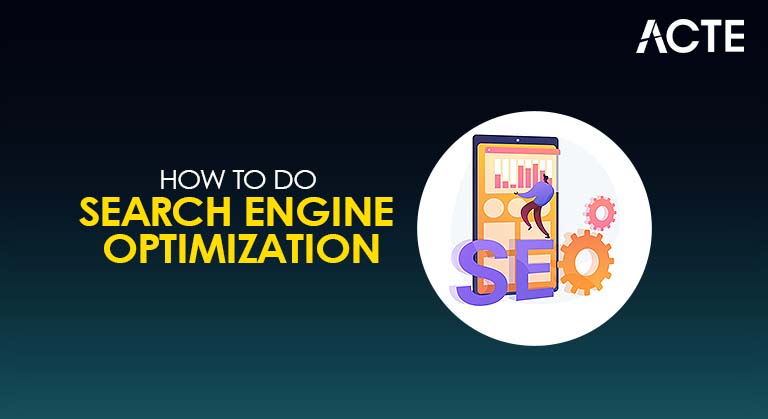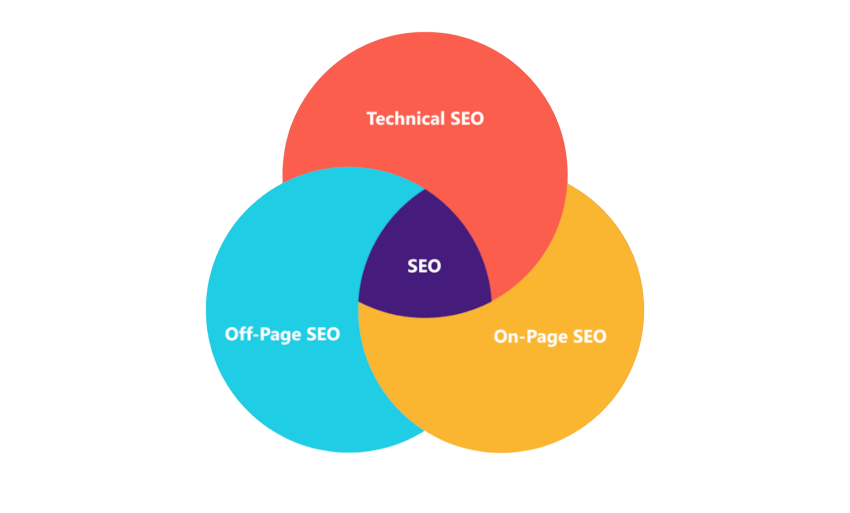
- Introduction
- What is SEO?
- Why is SEO Important?
- How Search Engines Work
- Key Elements of SEO
- Step-by-Step Guide to Doing SEO
- SEO Tools You Should Use
- Conclusion
Introduction
Search Engine Optimization (SEO) is a fundamental digital marketing strategy designed to increase your website’s visibility in search engine results pages (SERPs). Whether you’re a blogger, business owner, or marketer, understanding how to do SEO properly can significantly improve your organic traffic and, ultimately, your revenue.This comprehensive guide breaks down the core SEO concepts and provides actionable steps to help you optimize your site effectively.Search Engine Optimization (SEO) is the practice of optimizing a website to improve its visibility in search engine results pages (SERPs). It involves making strategic adjustments to website content, structure, Digital Marketing Training and performance to ensure that search engines like Google can easily understand and rank the site for relevant keywords. The goal of SEO is to attract more organic (non-paid) traffic by appearing higher in search results when users search for information, products, or services related to your content. Effective SEO combines technical improvements, quality content creation, and external link-building to enhance a site’s relevance, authority, and user experience.
Ready to Get Certified in Digital Marketing? Explore the Program Now Digital Marketing Online Training Offered By ACTE Right Now!
What is SEO?
SEO stands for Search Engine Optimization. It is the process of improving your website so that it ranks higher on search engines like Google, Bing, or Yahoo for relevant keywords. Higher rankings lead to more organic traffic visitors who find your website through unpaid search results.SEO involves optimizing different aspects of your site, including content, technical structure, user experience, and external factors such as backlinks.Search Engine Optimization (SEO) is the process of enhancing a website’s visibility on search engines like Metric in Google Analytics, Bing, or Yahoo. When users search for information, products, or services online, search engines display a list of results they consider most relevant. SEO helps websites appear higher on this list, which increases the chances of users clicking and visiting the site.

SEO involves several strategies and techniques. These include using relevant keywords in your content, optimizing page titles and descriptions, improving site speed, creating mobile-friendly layouts, and building backlinks from other trusted websites. There are three main types of SEO: on-page SEO (changes made directly on the website), off-page SEO (external factors like backlinks), and technical SEO (site structure and backend improvements). The main goal of SEO is to generate organic (non-paid) traffic. Unlike paid advertising, where traffic stops when the ads end, SEO provides long-term benefits by maintaining visibility in search results over time. A well-optimized site not only ranks better but also offers a better user experience. In today’s digital world, SEO is essential for businesses, bloggers, and content creators who want to reach a larger audience, build credibility, and grow their online presence.
Why is SEO Important?
- Increases Organic Traffic: Most online experiences start with a search engine. Higher ranks mean more visitors.
- Builds Credibility and Trust: Websites that rank well are often perceived as more trustworthy.
- Cost-Effective Marketing: Unlike paid ads, SEO Keyword Research organic traffic is free and sustainable over time.
- Improves User Experience: SEO requires optimizing your site’s speed, navigation, and mobile usability.
- Gives Competitive Advantage: Ranking above competitors helps capture more market share.
- Crawling: Search engines use bots (also called spiders or crawlers) to discover content on the web by following links and scanning pages.
- Indexing: After crawling, the content is analyzed and stored in a massive database called the index. Only indexed pages can appear in search results.
- Ranking: When a user performs a search, the search engine ranks relevant pages based on factors like keywords, content quality, backlinks, and user experience.
- Serving Results: The search engine displays a list of results (SERPs – Search Engine Results Pages), showing the most relevant and authoritative pages first.
- Algorithms: Search engines use complex algorithms (constantly updated) to determine which pages are most relevant for each search query.
- User Intent: Modern search engines try to understand the intent behind a query (informational, navigational, or transactional) to deliver the most useful results.
- Personalization: Search results can vary based on location, search history, Digital Marketing Training device type, and other user-specific factors.
- Continuous Updates: Search engines frequently update their algorithms to improve accuracy and prevent low-quality or spammy content from ranking highly.
- Keyword Research: Identifying the words and phrases people use to search for content related to your website.
- On-Page SEO: Optimizing individual web pages with proper use of keywords, meta titles, meta descriptions, headings (H1, H2, etc.), and internal linking.
- Content Quality: Creating valuable, relevant, and original content that answers users’ queries and keeps them engaged.
- Technical SEO: Improving site speed, mobile-friendliness, crawlability, indexing, secure connections (HTTPS), SEO Tips To Rule Google Maps and structured data (schema markup).
- Off-Page SEO: Building backlinks from other reputable websites to increase your site’s authority and trustworthiness.
- User Experience (UX): Ensuring easy navigation, fast loading times, mobile responsiveness, and a clean site structure for a better visitor experience.
- Mobile Optimization: Making sure your site works well on all mobile devices, as search engines prioritize mobile-first indexing.
- Page Speed: Optimizing website performance so pages load quickly, improving both SEO and user satisfaction.
- Local SEO: Optimizing your site to rank better in local searches, especially important for businesses targeting a geographic area.
- Analytics and Monitoring: Using tools like Google Analytics and Google Search Console to track performance, fix issues, strategies and make data-driven SEO decisions.
- Define Clear Goals: Increase followers, boost engagement, drive website traffic, or generate leads.
- Know Your Audience: Use analytics to understand demographics, interests, and behavior.
- Choose the Right Platforms: Focus your efforts where your audience spends the most time.
- Create a Content Calendar: Plan posts around key dates, campaigns, Types of Content Marketing and audience preferences.
- Optimize Profiles and Content: As detailed above.
- Engage Actively: Respond to comments and messages, and foster conversations.
- Monitor Results and Adjust: Track KPIs and tweak your strategy accordingly.
- Brainstorm Seed Keywords: Think about terms your audience might use.
- Use Keyword Tools: Google Keyword Planner, Ahrefs, SEMrush, or Ubersuggest.
- Analyze Competitors: See which keywords competitors rank for.
- Focus on Search Intent: Understand if users want information, to buy, or to navigate.
- Choose a Mix: Target a combination of short-tail (broad) and long-tail (specific) keywords.
- Title Tags: Include your primary keyword and keep it under 60 characters.
- Meta Descriptions: Summarize the page content to encourage clicks.
- Headings (H1, H2, H3): Structure content Video Marketing and include keywords naturally.
- URL Structure: Use clean, readable URLs with keywords.
- Content Quality: Write original, useful, and engaging content.
- Keyword Placement: Use keywords in the first 100 words, headings, and naturally throughout.
- Internal Linking: Link to related pages to keep visitors engaged.
- Image Optimization: Use descriptive file names and alt text.
- Mobile Optimization: Ensure the site is responsive and mobile-friendly.
- Website Speed: Compress images, leverage browser caching, and minimize code.
- SSL Certificate: Secure your site with HTTPS.
- XML Sitemap: Help search engines find your pages.
- Robots.txt: Control which pages bots can crawl.
- Fix Broken Links: Use tools like Screaming Frog to detect errors.
- Structured Data: Implement schema markup to Inbound Marketing enhance search listings.
- Mobile Usability: Check with Google’s Mobile-Friendly Test.
- Canonical Tags: Avoid duplicate content issues.
- Backlinks: Earn links from reputable sites within your niche.
- Guest Blogging: Write for other websites to get exposure and backlinks.
- Social Media Promotion: Drive traffic and brand awareness.
- Influencer Outreach: Partner with industry influencers.
- Local SEO: Claim and optimize Google My Business and local citations.
- Blog Posts: Regularly publish informative, well-researched articles.
- Videos: Create how-tos, reviews, and tutorials.
- Infographics: Visual content that’s easy to share.
- Ebooks and Whitepapers: In-depth resources that build authority.
- User-Generated Content: Encourage reviews, testimonials, and forums.
To Explore Digital Marketing in Depth, Check Out Our Comprehensive Digital Marketing Training To Gain Insights From Our Experts!
How Search Engines Work
Key Elements of SEO

Looking to Master Digital Marketing? Discover the Digital Marketing Expert Masters Program Training Course Available at ACTE Now!
How to Develop an Effective SMO Strategy
Step-by-Step Guide to Doing SEO
Step 1: Keyword Research
Before optimizing, you need to know which keywords to target.
Step 2: On-Page SEO
Optimizing individual pages to rank better and improve user experience.
Step 3: Technical SEO
Focuses on backend improvements to help search engines crawl and index your site.
Step 4: Off-Page SEO
Building your website’s authority through external efforts.
Step 5: Content Marketing
Creating valuable content that attracts and retains your audience.
SEO Tools You Should Use
| Tool | Purpose |
|---|---|
| Google Analytics | Track website traffic and behavior |
| Google Search Console | Monitor indexing and technical issues |
| Ahrefs / SEMrush | Competitor analysis, keyword research, backlinks |
| Google Analytics | Track website traffic and behavior |
| Moz | SEO insights and site audits |
| Screaming Frog | Website crawling and technical SEO audits |
| Ubersuggest | Keyword research and content ideas |
Preparing for Digital Marketing Job Interviews? Have a Look at Our Blog on Digital Marketing Interview Questions and Answers To Ace Your Interview!
Conclusion
SEO is an ongoing, multifaceted process that requires a strategic approach and continuous effort. By mastering keyword research, on-page and technical SEO, content marketing, and off-page tactics, Digital Marketing Training , Key elements of SEO you can significantly improve your website’s search visibility and attract quality organic traffic.Remember that SEO is not about quick fixes but sustainable growth through delivering value to users and aligning with search engine best practices.




